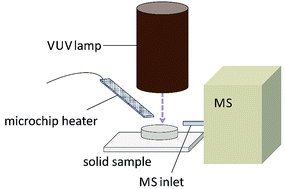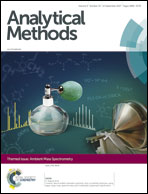Ambient mass spectrometry in the analysis of compounds of low polarity
Abstract
Ambient mass spectrometry techniques that are capable of ionizing compounds of low polarity are discussed. Photoionization and plasma-based ionization are the most important ionization techniques, but in some special cases modification of electrospray-based techniques can also result in improved ionization efficiency for low polarity compounds. The most important technical setups are presented together with examples of key applications in the fields of biology, environment, food and forensics.

- This article is part of the themed collection: Ambient Mass Spectrometry


 Please wait while we load your content...
Please wait while we load your content...